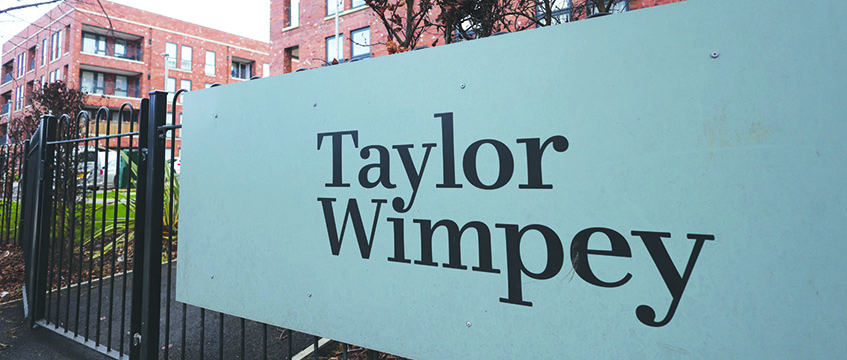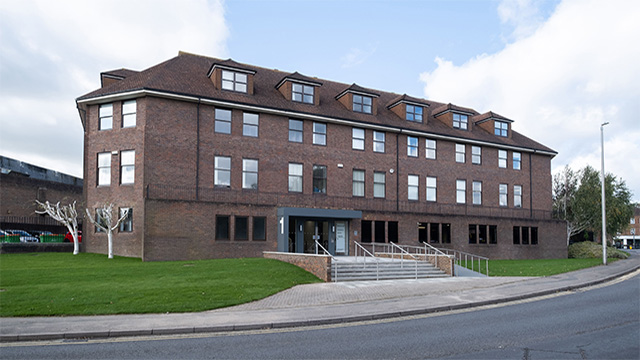LM Homes Ltd and others v Queen Court Freehold Co Ltd
Lewison, Lindblom and Leggatt LJJ
Leasehold enfranchisement – Collective enfranchisement – Common parts – Respondent nominee purchaser applying to acquire freehold and leasehold interests in property – Preliminary issues arising as to respondent’s entitlement to acquire leases of boiler room, sub-soil and airspace – Upper Tribunal holding respondent entitled to acquire leasehold interests in all disputed areas – Whether areas demised by leases falling within definition of “common parts” – Whether reasonably necessary to acquire leases for proper management or maintenance of common parts – Appeal dismissed
The respondent, as nominee purchaser, applied to acquire the freehold and three leasehold interests in Queen Court, Queen Square, London WC1, under section 13 of the Leasehold Reform, Housing and Urban Development Act 1993. The property was a purpose-built block of 45 flats. It was subject to a number of leasehold interests granted by the head lessee in respect of the roof area and airspace above the surface of the roof, the basement, excluding areas occupied by service installations, and the subsoil beneath the whole building. Each lease gave the lessee full rights of development and there was no covenant against alterations. However, the right to enter the demised property was reserved to the lessor either for emergency purposes or the proper performance of its obligations.
Preliminary issues arose as to the respondent’s right to acquire the leases of the boiler room, the sub-soil beneath the building and the airspace above it. The First-tier Tribunal (FTT) determined the issues in favour of the respondent. The Upper Tribunal, affirming that decision, held that the qualifying tenants were entitled to acquire the leasehold interests in all three disputed areas: [2018] UKUT 367 (LC); [2019] PLSCS 6.
Leasehold enfranchisement – Collective enfranchisement – Common parts – Respondent nominee purchaser applying to acquire freehold and leasehold interests in property – Preliminary issues arising as to respondent’s entitlement to acquire leases of boiler room, sub-soil and airspace – Upper Tribunal holding respondent entitled to acquire leasehold interests in all disputed areas – Whether areas demised by leases falling within definition of “common parts” – Whether reasonably necessary to acquire leases for proper management or maintenance of common parts – Appeal dismissed
The respondent, as nominee purchaser, applied to acquire the freehold and three leasehold interests in Queen Court, Queen Square, London WC1, under section 13 of the Leasehold Reform, Housing and Urban Development Act 1993. The property was a purpose-built block of 45 flats. It was subject to a number of leasehold interests granted by the head lessee in respect of the roof area and airspace above the surface of the roof, the basement, excluding areas occupied by service installations, and the subsoil beneath the whole building. Each lease gave the lessee full rights of development and there was no covenant against alterations. However, the right to enter the demised property was reserved to the lessor either for emergency purposes or the proper performance of its obligations.
Preliminary issues arose as to the respondent’s right to acquire the leases of the boiler room, the sub-soil beneath the building and the airspace above it. The First-tier Tribunal (FTT) determined the issues in favour of the respondent. The Upper Tribunal, affirming that decision, held that the qualifying tenants were entitled to acquire the leasehold interests in all three disputed areas: [2018] UKUT 367 (LC); [2019] PLSCS 6.
The appellants appealed contending that the qualifying tenants were entitled to acquire the freehold, including the basement, but not the airspace or subsoil. The question was whether all or any of the areas demised by the leases fell within the definition of common parts in section 101(1) of the 1993 Act; and, if so, whether it was reasonably necessary to acquire the leases for the proper management or maintenance of those common parts.
Held: The appeal was dismissed.
(1) It was a basic common law principle that an ordinary conveyance of a freehold carried with it the freehold of the airspace above it and the subterranean strata below. It was now accepted that, in principle, the qualifying tenants were entitled to acquire the freehold of the building. The basement areas were within the built envelope of the building and the sub-soil would pass on an ordinary conveyance of the block. That was consistent with the further general principle of English land law that once constructed, a building became part and parcel of the land itself. The same general principle applied to the airspace above the built structure. In the case of a lease of a whole building, the grant of the lease would carry with it the airspace above the building. To come to the contrary conclusion would produce a result which was undesirable and impracticable. It followed that, for the purposes of the 1993 Act, the airspace and the sub-soil formed part of the “premises” to the freehold of which the qualifying tenants were entitled. The primary term used in the definition of premises was “building” in section 3(1). Although the primary meaning of a “building” was a built structure, it was clear that the context might require a broader meaning. In the context of the 1993 Act, a building included the ground on which a built structure stood and the airspace immediately above the roof of a building could be regarded as part of the building. Accordingly, all three of the disputed areas were parts of the building as defined in section 3(1): Denetower Ltd v Toop [1991] 1 EGLR 84, R (Edison First Power Ltd) v Central Valuation Officer [2003] 2 EGLR 133, Cadogan v Panagopoulos [2010] 2 EGLR 151 (Ch), [2011] 1 EGLR 33 (CA) and Merie Bin Mahfouz Co (UK) Ltd v Barrie House (Freehold) Ltd [2015] EGLR 22 applied. Dartmouth Court v Berisworth [2008] 2 EGLR 141 considered.
(2) Whether something was within the definition of “common parts” in section 101(1) depended on the facts at the date on which the qualifying tenants served notice exercising their right to collective enfranchisement under section 13. What mattered was how the parts of the property were used: not the title under which they were held. The common parts in the present case included not only the physical plant and machinery which provided the services, but also the spaces in which they were housed. By any ordinary understanding of the expression, the whole of the basement which housed the service installations for the whole of the building was one of the common parts of the building. Since the definition in section 101(1) was inclusive rather than exclusive, both those areas fell within the definition of common parts. It made no difference that the three areas in dispute were held under separate leases. The test was a functional test, not a matter of title. Section 2(3) was explicit on the point. One of its avowed purposes was to enable the qualifying tenants to acquire a leasehold interest which “consists of” common parts. If the grant of a lease of common parts were to remove it from the ambit of common parts, section 2(3) would be fatally undermined: Cadogan and Barrie House applied.
(3) The remaining question was whether the acquisition of the leasehold interests was reasonably necessary for the proper management or maintenance of those common parts. In order to answer that, it was necessary to consider what rights the freeholder already had. Each of the three leases reserved to the landlord the right to enter the demised property either for emergency purposes or for the proper performance of the lessor’s obligations to the owners or occupiers of the flats. In addition, the basement lease contained an additional right for the lessor to access the boiler room to connect into, repair, maintain or renew any plant or equipment. However, the leases also allowed for wholesale development. Accordingly, the qualifying tenants were entitled to insist on the common parts remaining as they were and it was reasonably necessary for them to acquire the freehold.
Edward Denehan (instructed by Wallace LLP) appeared for the first and third appellants; and (instructed by Peppers LLP) appeared for the second appellant; Phillip Rainey QC and Carl Fain (instructed by Cripps Pemberton Greenish) appeared for the respondent.
Eileen O’Grady, barrister
Click here to read a transcript of LM Homes Ltd and others v Queen Court Freehold Co Ltd










